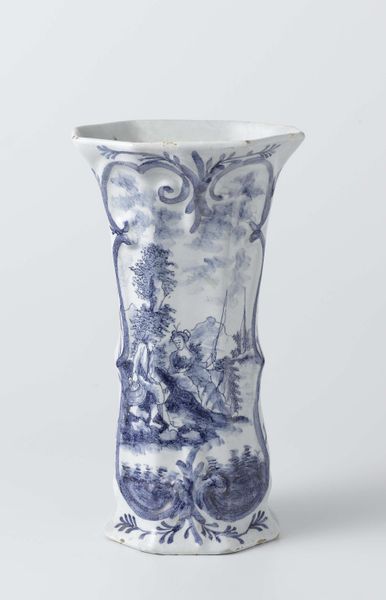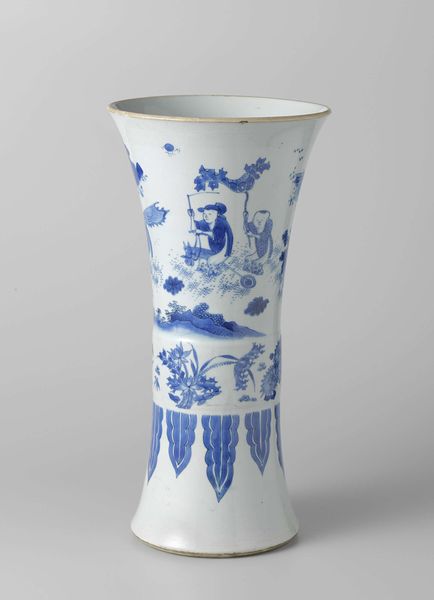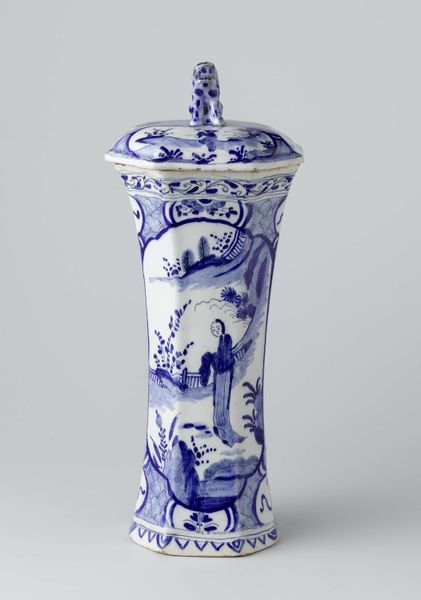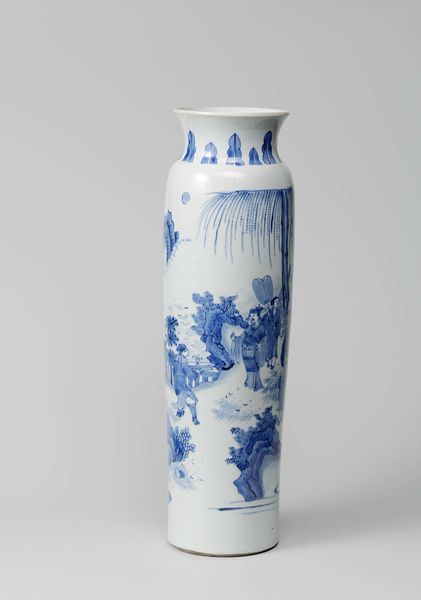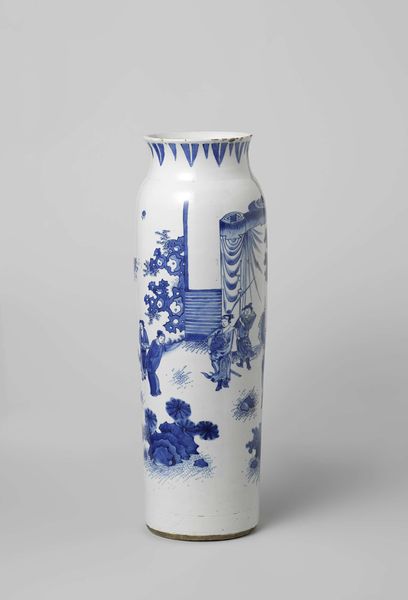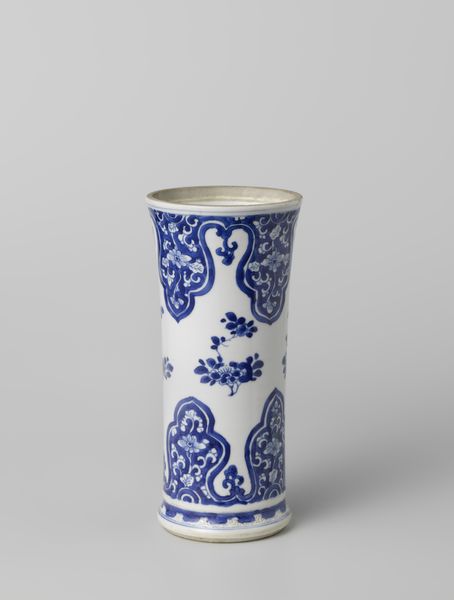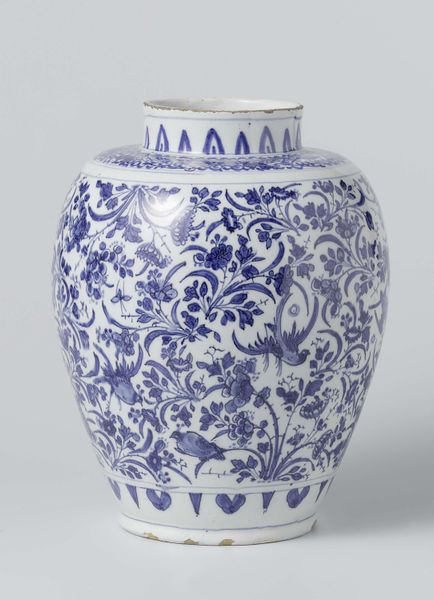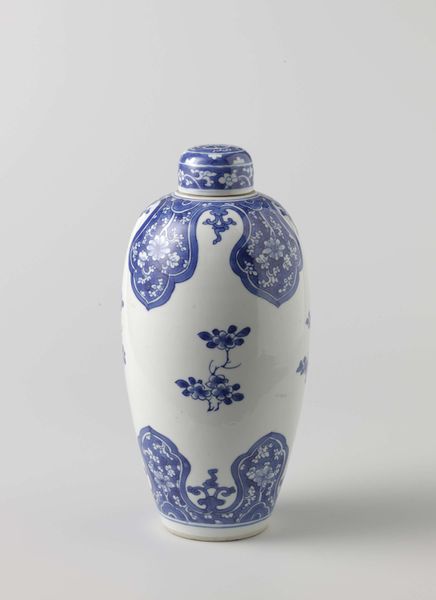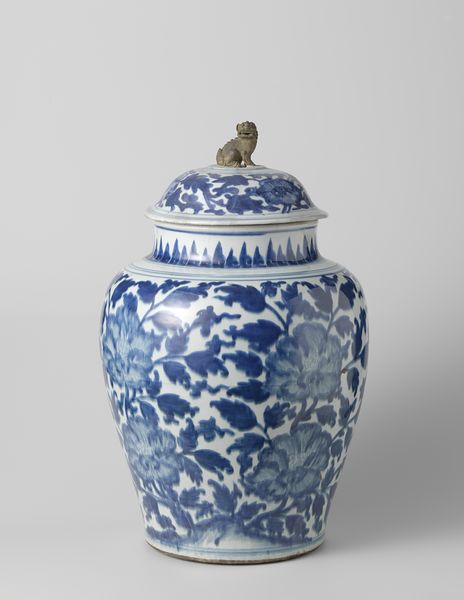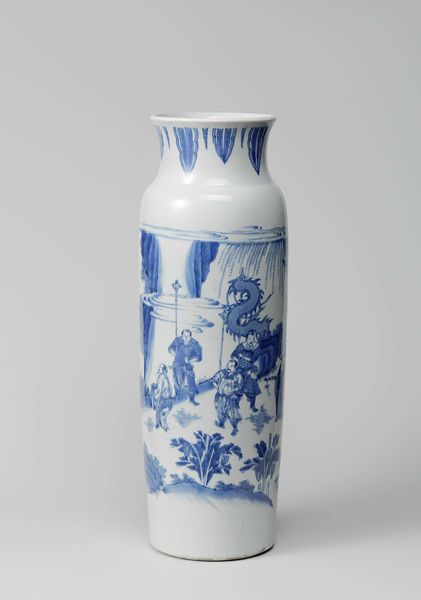
ceramic, sculpture
#
ceramic
#
sculpture
#
ceramic
#
decorative-art
Copyright: Rijks Museum: Open Domain
Curator: The “Two beaker vases and a vase, part of a garniture” hails from the late 18th century and represents a high point in Dutch ceramic craftsmanship. It would have been quite an investment for whoever commissioned the object to exist. Editor: It's primarily the Delftware blue that strikes me—a calm, cool tonality that belies the dense detail and slightly overwhelming floral and quasi-Chinese imagery, don't you think? Curator: Absolutely, the material quality is essential here. Each of these pieces from De Klaauw showcases the technical virtuosity and the control of the ceramic-making process. I mean the firing alone demanded expertise, not to mention how global demand had turned small local studios into full factories employing potentially entire families. Editor: And that very color ties it to a long and rich tradition—consider the symbolic resonance of blue as it traveled from ancient lapis lazuli to the robes of the Virgin Mary, eventually finding its way into secular decorative objects like this. It seems the aspiration to connect with something ancient and valued is present here too. Curator: And further down, the makers applied particular, culturally understood decorative motifs, not only imitative of designs from China, but with distinct European design choices made. These aren’t directly stolen copies as some might carelessly suggest, but the combination and creative reimagining of the motifs as part of something original, born in Delft. The work recontextualizes these symbols of power. Editor: Speaking of context, the repetition of the flowers – look closely and you'll spot peonies nestled amongst ambiguous landscapes – becomes a powerful language. Each flower whispers of wealth, longevity, maybe even a delicate melancholy inherent in fleeting beauty. What else could be hiding here that could be interpreted culturally, historically, perhaps psychologically? Curator: Such interpretations risk overstating individual intentions. These objects gain worth in society simply from circulating within systems of exchange and commerce and the status associated with ownership; it’s the object's very embeddedness in these concrete, worldly relations that endows meaning and even, to an extent, aura. Editor: True, perhaps. But in the language of symbols, intention can be more layered, inherited across generations of seeing and understanding. This object reminds me that these old cultural connections shape us more profoundly than we sometimes acknowledge. Curator: Yes, and I hope our discussion provides a way to acknowledge all these elements together when engaging with a historic, hand-crafted artwork, acknowledging both the materials used in manufacturing, as well as the symbolism present in their very careful application and construction. Editor: Indeed. What may appear initially as a simple decorative piece reveals layers of stories when viewed through multiple lenses. It brings home how historical memory lives and breathes through visual imagery, offering each of us a path towards uncovering meaning over time.
